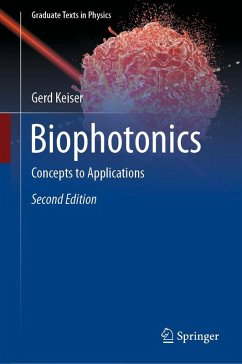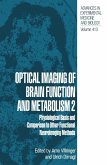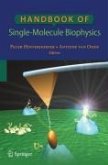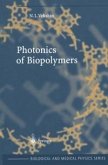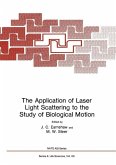This book introduces senior-level and postgraduate students to the principles and applications of biophotonics. It also serves as a valuable reference resource or as a short-course textbook for practicing physicians, clinicians, biomedical researchers, healthcare professionals, and biomedical engineers and technicians dealing with the design, development, and application of photonics components and instrumentation to biophotonics issues. The topics include the fundamentals of optics and photonics, the optical properties of biological tissues, light-tissue interactions, microscopy for visualizing tissue components, spectroscopy for optically analyzing the properties of tissue, and optical biomedical imaging. It also describes tools and techniques such as laser and LED optical sources, photodetectors, optical fibers, bioluminescent probes for labeling cells, optical-based biosensors, surface plasmon resonance, and lab-on-a-chip technologies. Among the applications are optical coherence tomography (OCT), optical imaging modalities, photodynamic therapy (PDT), photobiostimulation or low-level light therapy (LLLT), diverse microscopic and spectroscopic techniques, tissue characterization, laser tissue ablation, optical trapping, and optogenetics. Worked examples further explain the material and how it can be applied to practical designs, and the homework problems help test readers' understanding of the text.
This second edition provides updates as follows:
1) Updated references in each chapter with recent review papers, tutorials, and generic research results.
2) New sections in Chap. 3 addressing tapered fibers for sensors, biocompatibility issues of optical fibers, and concepts of implantable fibers.
3) Updates in Chaps. 4 and 5 on optical sources and photodetectors discussing fiber-based sources, silicon photomultipliers, and high-speed cameras for biosensing.
4): Sections on improvements in microscopy, imaging, spectroscopy, and sensing in Chapters 7-10.
5) New biophotonic application techniques in Chap. 11 will include optogenetic advances, smart phones for imaging, wearable biophotonic sensors, and robotic surgery and light therapy.
This second edition provides updates as follows:
1) Updated references in each chapter with recent review papers, tutorials, and generic research results.
2) New sections in Chap. 3 addressing tapered fibers for sensors, biocompatibility issues of optical fibers, and concepts of implantable fibers.
3) Updates in Chaps. 4 and 5 on optical sources and photodetectors discussing fiber-based sources, silicon photomultipliers, and high-speed cameras for biosensing.
4): Sections on improvements in microscopy, imaging, spectroscopy, and sensing in Chapters 7-10.
5) New biophotonic application techniques in Chap. 11 will include optogenetic advances, smart phones for imaging, wearable biophotonic sensors, and robotic surgery and light therapy.
Dieser Download kann aus rechtlichen Gründen nur mit Rechnungsadresse in A, B, BG, CY, CZ, D, DK, EW, E, FIN, F, GR, HR, H, IRL, I, LT, L, LR, M, NL, PL, P, R, S, SLO, SK ausgeliefert werden.
"Biophotomcs is a good textbook and will undoubtedly be a valuable lecture Supplement in an advanced undergraduate or graduate-level course. ... the material is pertinent and is presented clearly enough to provide a springboard for further study" (Arjun Yodh, Physics Today, February, 2018)

